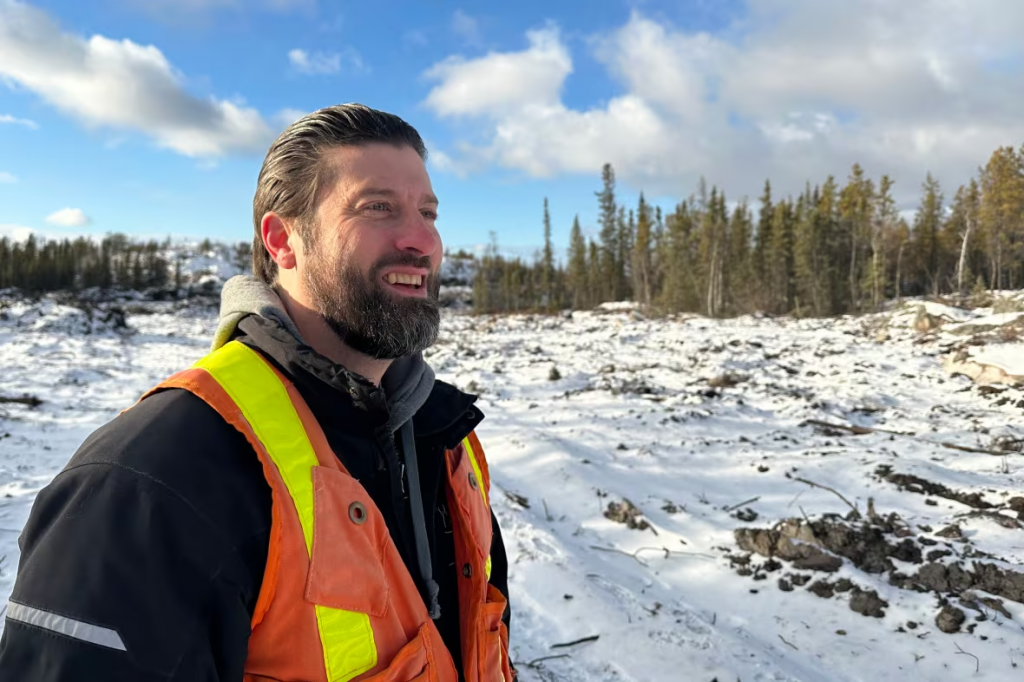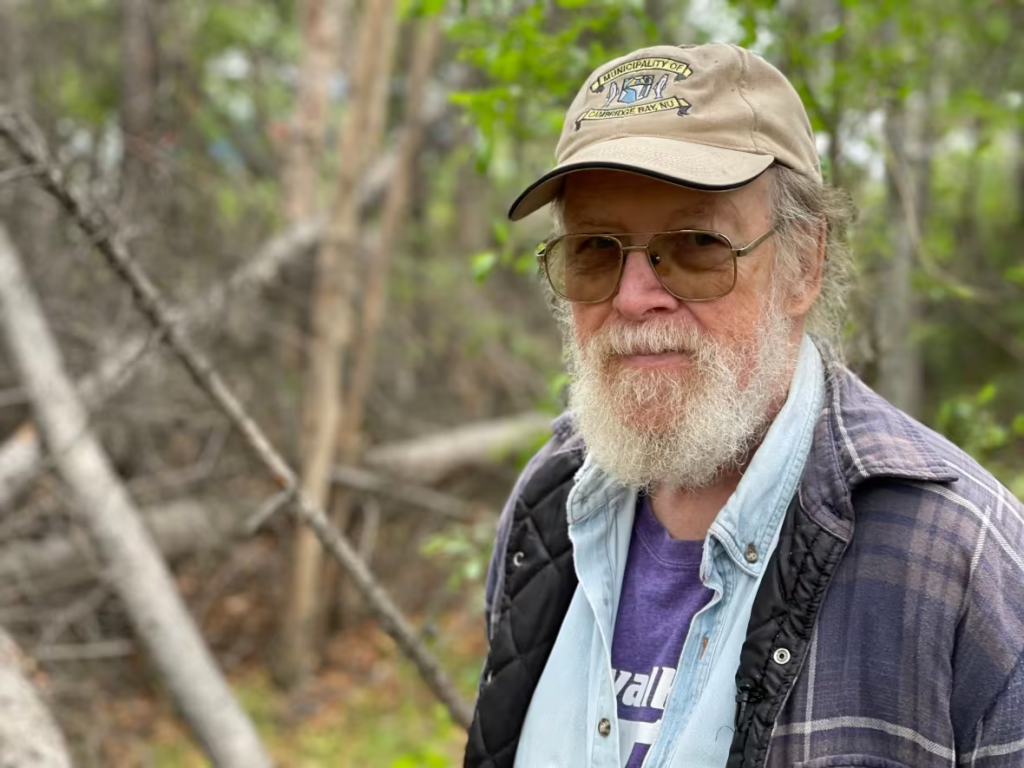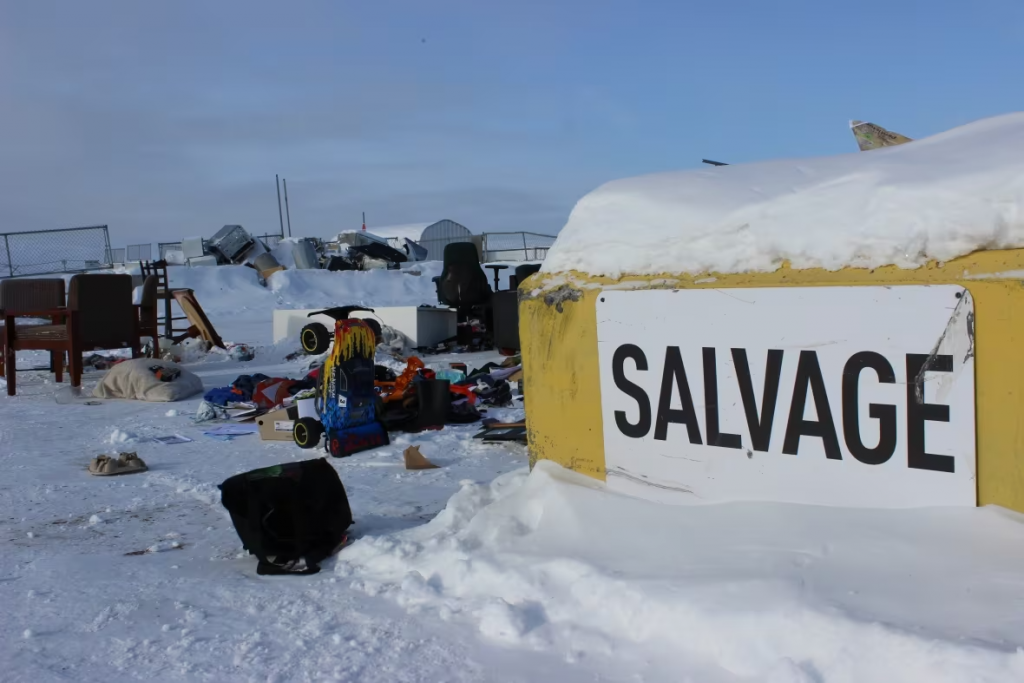Yellowknife planning $6.7M dump expansion

New landfill cell could increase life of dump up by decade or more, says city director
The City of Yellowknife is in the early stages of a $6.7 million plan to grow its solid waste management facility — a plan one Yellowknife resident says is a step toward the planet becoming “one great big garbage dump.”
The money will be used to build a new landfill cell, a basin type structure in the ground, that could increase the landfill’s lifespan by a decade. The city refers to it as cell C. There are already two similarly regulated cells at the dump: one that is covered and one that is actively taking on garbage from homes around the city.
The latter was built in 2016. Chris Greencorn, the city’s manager of public works and engineering, said it has space for another two to four years’ worth of Yellowknife’s waste.
“We don’t want to push cell B to its limits and not be ready,” he said. “But we also don’t want to leave it to the 11th hour. So I would say that this [new] cell is pretty much on schedule with our planning process.”

The city has started setting aside money for the work — $2.16 million in the recently-approved budget. Greencorn expects a design for the new cell, which will be built in the quarry on the west side of cells A and B, to be finished this year.
Like cells A and B, Greencorn said the new cell will have an HDPE plastic liner so leachate — sometimes referred to as “garbage juice” — doesn’t seep into the ground.
Greencorn said the city will put the project out to tender in winter 2025, and a city spokesperson said the work is expected to be done in the next two or three years.
“The last two cells that we’ve built were technically between 5 and 7 year cells, but we’ve managed to expand those [lifetimes] quite a bit just through diversion,” he said. “I’m hoping that the next cell will probably be anywhere between a 10 and 12 year cell.”
Salvaging as a better solution
Yellowknife makes a lot of garbage. Updated numbers are expected this year, but more than 24,000 tonnes of garbage were landfilled at the solid waste facility in 2017, which worked out to an average of 1,100 kilograms per person according to a 2018 waste management plan.
That’s more than 400 kilograms above the Canadian average.
Greencorn said there are a number of reasons for that, including the fact Yellowknife is “at the end of the road” and is a transient town where people often throw things out when they move away.
The city is trying to get waste down to 500 kilograms per person by 2030.

Walt Humphries, a longtime Yellowknife resident and salvaging aficionado, is critical of growing the landfill. He said if the city — and humanity, more generally — doesn’t find a better solution for waste, the planet will slowly become one big garbage dump.
But how do you do that?
“Good stuff shouldn’t end up in the dump. It should be salvaged, used, or sold,” said Humphries.

The solid waste management facility has a public salvaging area, but Humphries would like the city to take it more seriously and give people an opportunity to access more stuff. For example, creating a specific place where wood scraps can be dropped off and picked up at liberty.
“It gets people thinking,” he said.
“I think salvaging should be brought up as the best way to divert things from going into the landfill.”
Related stories from around the North:
Canada: Recyclables in Yellowknife, Northern Canada have been dumped in landfill for over a year, CBC News
Finland: Only 1 % of Finnish waste sent to landfill, Yle News
Norway: Plastic on Svalbard: “I could never believe it was this bad”, The Independent Barents Observer



